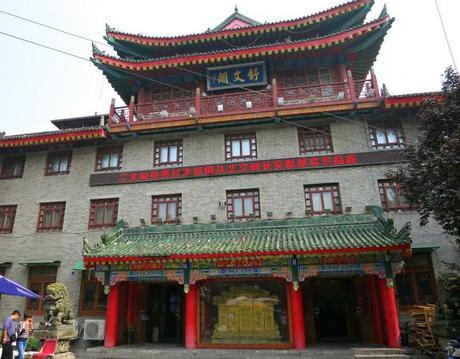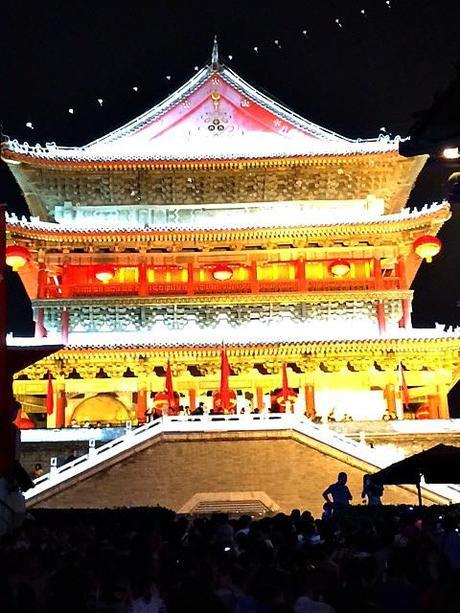
Warning: this is not a history lesson but it may involve the words ancient, museum, monuments, ruins and dynasties!
Three months into this relationship, it’s time we learned a little bit about the new city in my life and its colorful past.
Xi’an or “西安” — literally translated means “Western Peace.”
I’m pretty confident though, most “westerners” as such have heard little about this enthralling city that – at first glance – is easy to pass off as merely another blip on China’s monstrous radar of no less than 656 cities!
But don’t be fooled by this time-honoured nook in the country’s north west.
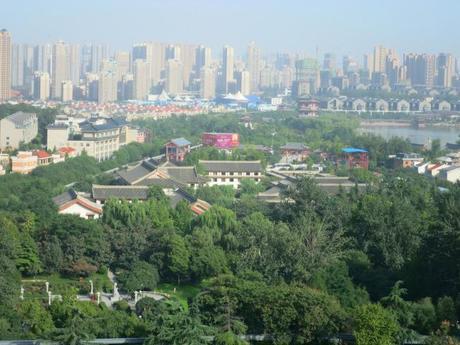
Xi’an along with the distinguished cities of Rome, Cairo and Athens, is hailed as one of the birth places of ancient civilization.
And you thought we were in nowheresville! Impressive huh?
Proud Xianese will tell you: if China were a tree; Beijing is its branches, Shanghai its leaves and Xi’an, its roots!
3100 years in the making, for 1200 of those, 13 dynasties placed their capitals in Xi’an – including Zhou, Qin, Han and the Tang dynasty (which by the way, until the Ming Dynasty in 1369 was known as Chang’an).
China is a country ruled by a rich history of remarkable dynasties until 1911… and in Xi’an each one marked a period in time where the country’s rulers (who typically originated from the one family until the final King was overthrown) played a major role in the city’s momentous evolution.

Under the Qin Dynasty in 221 to 206 BC, China was unified for the very first time. The first Emperor Qin Shi Huang – today well known for ordering a cast of thousands to construct his mammoth mausoleum and the now world-famous Terracotta Army, to guard it. Read about that 8th Wonder of the World, here.
During its heyday, Chang’an was considered one of the largest and most populous cities in the world! Around AD 750 it was known as the “million people’s city.” Chinese records estimate around 800,000–1,000,000 lived within the city walls.
In the Han Dynasty, Xi’an became the military and political centre of China – the Asian gateway to Europe.
This strategic and economic importance was mainly due to its central position in China. The roads leading to several other major provinces including Sichuan, Hubei and Henan all converged here – with the mountainous country surrounding the Wei River basin – known as the cradle of Chinese civilization.
There were only two roads through to the south, and two through mountainous Gansu to the west, thus forming the beginning of the ancient Silk Route.
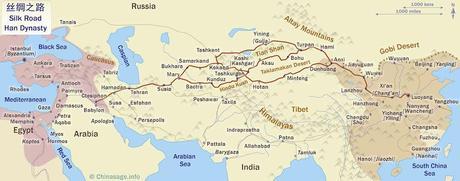
The legendary Silk Road was a series of trade and cultural transport routes 6,500 kilometers long, connecting the West with the East – linking traders, merchants, pilgrims, monks, soldiers, nomads, and urban dwellers from China and India, all the way to the Mediterranean Sea.

By the turn of the Tang Dynasty (618—907) Xi’an, along with Constantinople (Istanbul) and Baghdad was one of the largest cities in the world. A cosmopolitan urban center home to many international residents from across Asia and beyond.
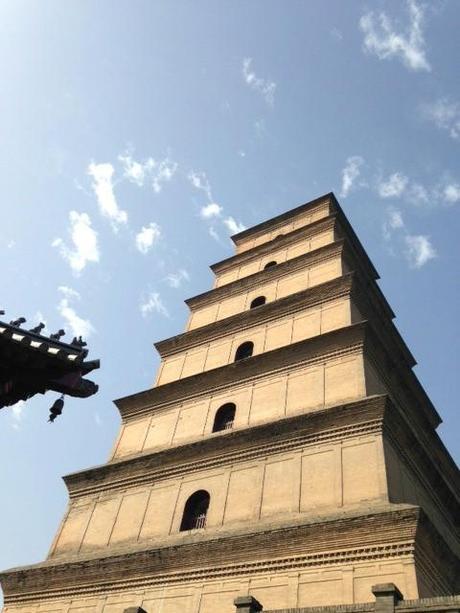
It was also a major religious centre, mostly for Buddhism and Taoism. From my window I can see one of the few major Tang-era buildings left in Xi’an today. The Great Wild Goose Pagoda. 64 metres high, it stored the translations of Buddhist sutras obtained by a renowned Buddhist Master who returned to China in 645 after 15 years of travel across India and central Asia.
So, how important is my neighbour? It was just added to the World Heritage list this year!
The Tang Dynasty also saw the construction of Weiyang Palace the largest palace ever built on Earth! Covering 4.8 km² – it’s almost seven times the size of the current Forbidden City, or 11 times the size of the Vatican City. Yep!
If that’s not enough history for you, Xi’an is also considered to be the last calling of the Stone Age. In 1953, a 6,500-year old Banpo Neolithic village was discovered on the outskirts of the city containing the remains of several well-organized Neolithic settlements, carbon dated back 6700 years!
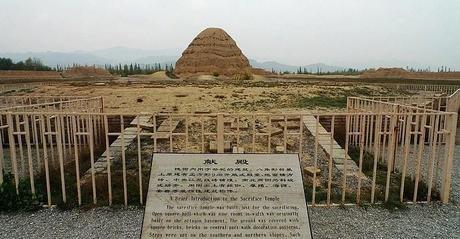
Xi’an is also home to the most complete city wall that has survived in China, as well being one of the largest ancient military defensive systems in the world.
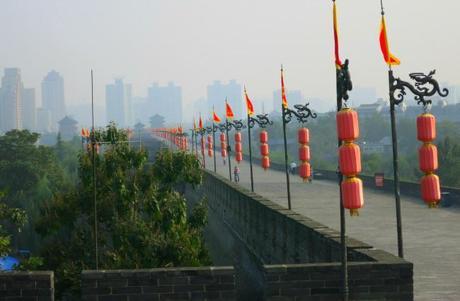
After an extension, the wall now stands 12 meters tall, covering 13.7 kilometres in length with a deep moat surrounding the wall including four gates, respectively named Changle (eternal joy) in the east, Anding (harmony peace) in the west, Yongning (eternal peace) in the south and Anyuan (forever harmony) in the north.
The south gate in the city centre is the most beautifully decorated, near the Bell and Drum Towers (which were once used to keep time for the town and sound alarms).

Today with a population of 8.5 million, Xi’an still stands strong as the largest metropolis in Northwest China.
You can appreciate, it’s an historical treasure chest and is now reemerging as a cultural and (with 50 universities) educational hub.
In 2012 a report by the Economist Intelligence Unit named Xi’an as one of the 13 emerging megacities in China, home to global companies like Mitsubishi, Toshiba, Fujitsu, Coca-Cola, Samsung and Boeing.
It’s this plethora of historical monuments and ancient ruins in Xi’an that afford it the title Natural Museum History and make it one of the most popular tourist destinations in China.
The saying goes: “Go to Shanghai and you will find a 100-year-old China; go to Beijing and you will find a 1000-year-old China; go to Xian and then you will find a 3000-year-old China.”
So, what are you waiting for? Come on over and say ‘Ni Hao’ to the new interest in my life.
